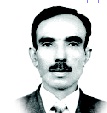Sajjad Shaukat
IN one of the bloodiest-ever terror attacks in Pakistan, six Taliban militants mercilessly killed at least 141 people including 132 children and nine staff members of the Army Public School (APS) in Peshawar on 13 December 2014. They also burnt a lady teacher alive. After eight hours operation, Pak Army’s commandos cleared the school area, and six militants were killed. On the same day, Tehreek-e-Taliban Pakistan (TTP) claimed responsibility for the ghastly act at the APS. The tragic loss of the lives of innocent children moved the entire world deeply. Every Pakistani said that shame on these terrorists who considered innocent children as their enemies, and martyred them through brutal tactics.
The then Pakistan’s Prime Minister Nawaz Sharif and former Chief of Army Staff, Gen. Raheel Sharif including leaders of various political and religious parties strongly condemned the heinous attack at the Peshawar school. PTI Chief Imran Khan ended the PTI’s 126-day sit-in at Islamabad and also decided to cooperate with the government against terrorism. However, after that inhuman gruesome tragedy, question arose as to what measures required to eliminate terrorism from the country. In this context, the former Army Chief Gen. Raheel accompanied by DG ISI rushed to Kabul on 17 December 2014. Resources suggested that during his meeting with his Afghan counterpart, Afghan President Ashraf Ghani and the ISAF commander, he presented evidence of the Peshawar massacre’s linkage with TTP sanctuaries in Afghan provinces of Kunar and Nuristan.
In fact, Afghanistan has become a hub of anti-Pakistan activities from where external secret agencies, especially Indian RAW, are sending logistic support to Baloch separatist elements and TTP insurgents in Pakistan. In the recent years, especially TTP’s militants and its affiliated banned groups conducted many terror-activities in various regions of the country as part of the scheme to create chaotic situation in the country. Hence, RAW also used TTP terrorists in relation to the attack at the APS. There arose the need of immediate execution of outstanding cases of death penalty to terrorists. In this respect, the then Prime Minister Nawaz Sharif revoked the ban on capital punishment in terrorism cases. The nation also expected that politicians should show no politics on the blood of innocent children. For the purpose, leaders of all the top political parties including PTI Chief Imran Khan attended a meeting of the parliamentary parties convened by Prime Minister Sharif after the deadly attack at a school in Peshawar. However, all the leaders unanimously decided to form a parliamentary committee to chalk out a “Plan of Action” in seven days which would be approved by the political and military leadership.
In this connection, on 2 January 2015, besides the chiefs of almost all the political parties and military top officials agreed on a draft of legislative measures which paved the way for establishment of special military trial courts. It was unanimously agreed that the 20 points National Action Plan (NAP) enunciated in the All Parties Conference (APC) Resolution of 24 December 2014 was being acted upon – the bill as 22nd (Constitutional) Amendment was enforced soon after its approval from Parliament. Special military courts were established and the ruthless terrorists facing death penalty had been hanged. In this regard, the role of the Armed Forces is appreciating in uprooting the terrorists from their so-called safe havens. But, inability and evident reluctance on the part of political leadership remained a major contributing factor affecting the implementation of NAP in its true spirit. It may be informed that in January 2015, apex committees were formed to expedite the implementation of the National Action Plan. 15 committees and sub-committees were set up; however, no plausible developments were witnessed. Ironically, the inability on the part of government was covered with mere verbal statements in relation to NAP implementation.
Unfortunately, a full-scaled activation of National Counter-Terrorism Authority (NACTA) remained in limbo even after eight years of its creation. Lack of allocation of appropriate resources for NACTA, non framing of service rules for the Authority etc made NACTA a real midsummer night dream. Debate generated over all twenty points of NAP to highlight the progress and performance of the government with respect to its implementation. It may be highlighted that some federal ministries are taking steps in the right direction, but the pace is quite slow. Interior Ministry’s prepared rules and regulations for International Non-governmental Organizations (INGOs), local NGOs, policy draft over arms licenses, Madrassa reforms etc remained non-implemented. Ironically, after TTP, a newer and more formidable menace in shape of ISIS is raising its head in the region. In the recent past, terror attacks by these outfits in various regions of Pakistan, especially in the Balochistan province might be cited as example. In this connection, the nation must press the political leadership to realize the task and fully implement the NAP. To supplement the gains of the military operations Zarb-e-Azb and Radd-ul-Fasaad, there is a need to declare 2019 as the year of the complete implementation of NAP. Government should be encouraged to end its nap on NAP. The focus should be on NAP and its implementation as part of the counterterrorism measures. Nonetheless, tragic memory of the APS Attack will remain fresh in the minds of people, as mass murder of children is a manifestation of the most barbaric face of the Taliban insurgency led by TTP.
—The writer is freelance columnist based in Lahore.










